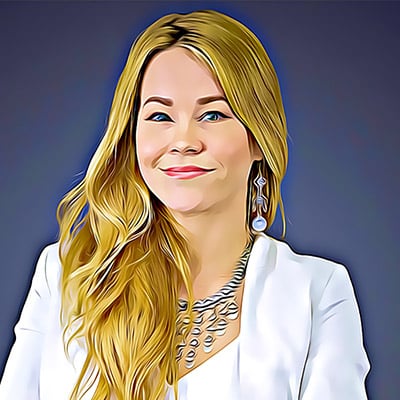Tips To Ensure Your Readers Quickly Grasp Your Message Ensure...

Shapes are a basic element of website layouts. They are used in a number of ways, from conveying special meanings to organizing information just like colours could be used to convey certain messages. Every website requires shapes of some sort in order to look interesting. If a webpage appears to be too flat, it can be boring. Shape use in website design may include geometric, organic, and abstract. The geometric variety, including squares, circles, triangles, ovals, etc… are the most commonly used. Natural images include elements found in nature, such as leaves and stars. Icons, symbols, and other uncategorized images belong under the abstract category. These are usually added to a layout through images.
The popularity of certain geometric elements in web design comes and goes. In 2011, for instance, many web page designs featured diagonals. Squares of various colours and sizes became popular in 2013. Currently, webmasters are opting for a minimalist design and tend to go with clean and simple geometrics as well as laconic outlines. The idea is to make the content appear organized and well-structured.
Polygon web design has been popular over the past year or so as well.
If you are wondering how to implement shapes in your web design, here is an overview:
A polygon can be described as any closed shape with at least three angles and sides. These can be simple, regular, or irregular. They are usually found in the background of a web page, as they offer sharpness and depth. Low poly designs are traditionally found in retro style video games. Today, many web designers are experimenting with the style.
Diamonds, or rhombus, are elements that can be placed into the layout either separately or inner-connectedly. They are ideal for logos or headings and provide a contemporary look for web pages.
Diagonals can be used to arrange content in a well-structured manner with vertical and horizontal lines. They serve a purpose of drawing viewers’ eyes from one point of the page to another point. Diagonal lines tend to be found on creative website layouts.
Circles have been recognized and used for as long as humans have been around. They symbolize completeness, unity, infinity, etc. On websites, they can be incorporated in every area on a page: the logo, icons, buttons, and image thumbnails. Circles can be used in a variety of sizes and colours. They can be simple 2D elements or 3D bubbles.
The hexagon is another versatile symbol that can be used in web design. It can be used in icons, logos, buttons, and other creative elements. It’s a more recent trend since early technology did not provide an easy way to make them.
Hexagons are often used with other elements, such as circles and squares.
Squares have been used for organization purposes as well as fun and creative purposes. Box type elements have been used in web design since its earliest days. Web and graphic design technology has advanced to the point at which they can be used in very creative, exciting ways without looking clunky or cheap.
Triangles are strong elements can be used to force the viewer’s focus on a specific area of the page. More often than not, they are used with squares or rhombuses.
Popular natural elements you will find in web design include:
– Stars
– Flowers
– Leaves
– Hearts
– Animals
– Trees
– Clouds
When selecting shapes for your web design, key factors to consider include the message(s) your brand conveys, how you want the content organized, and appearance.
Tips To Ensure Your Readers Quickly Grasp Your Message Ensure...
How To Implement Pinterest SEO? Pinterest with SEO Importance For...
10 Proven SEO Techniques For 2018 SEO Techniques Significantly improve...
Want to Create an Ideal Ecommerce Site? Here is What...
How Do I Get Started With A Google Remarketing Campaign?...
Automated Link Building Can I Automate the Link Building Process?...
Ecommerce Website For Small Business: What to Focus On? Trends...
Looking For SEO Services? Consider How SEO Ties With Your...
Definition Of Off-Page SEO What Is Off-Page SEO? Increasing Site’s...
What are the main stages of a website design? As...
What is PPC Marketing and what are the advantages? Pay...
In What Ways Can Video Marketing Help My Business? Benefits...
What Are Some Good Google Remarketing Practices? Google Remarketing Practices...
What Are Good Mobile Marketing Tactics for Small Businesses Good...
6 Product Design Principles Every Organization Can Adapt Product Design...
Keyword Research For Search Engine Optimization Keyword Research Optimizing Your...
Google’s New Mobile-Friendly Ranking Algorithm Will Affect Search Engine Optimization...
Why You Must Work With SEO Companies in Toronto That...
Blog Search Engine Marketing Benefits & Ideas For Local SEO...
Effective Marketing Strategies Don’t Only Focus On SEO Effective Marketing...
Search Engine Optimization For Small Business Search Engine Optimization for...
Working With An SEO Company In Toronto For Google News...
8 Image Search SEO Tips To Give You Extra Traffic...
Choosing The Best Web Design Company 5 Important Questions To...
Mobile Web Design Problems & Solutions Mobile-friendliness How to Achieve...
How SEO Marketing Compares To The Entertainment Industry? SEO Marketing...
What Are Some Unique Tactics Offered by SEO Companies? Unique...
Do I Need A Professional Website Marketing Company? Tools For...
The Effect Of Data Encryption On Paid Search Why you...
The Four Most Important Ranking Factors For SEO In Toronto...
Top 7 Google Ranking Factors in 2021 SEO is the most...
Tips For Web Designers: How To Increase Productivity Tips For...
SEO Trends for Website Optimization in 2021 This post shares...
Tips For Developing An Effective Icon Design Custom Website Design...
6 Pay Per Click Advertisement Tips For Startups Pay Per...
What is Magento Website Development? How Does It Work? An...
Automotive Dealership SEO Campaign Remarketing Services for Online Business Advertising...
Keeping Your SEO Ranking Up While Your Website Is Down...
The Art of Republishing Old Content It is not possible...
6 Factors to Consider When Choosing the Right Web Design...
What Are Some Methods For Retargeting Toronto Consumers? Methods for...
Nova Solutions Headquarters
700 University Ave, Toronto, ON M5G 1X6
Tel: +1 800-790-3082
Office Hours: M-F 9am – 9pm
Copyright © 2021 Nova Solutions Corporation | All Rights Reserved.
Working with Third-Parties








A good website starts with stunning design. As the Lead Designer at Nova,
Andrew uses his vast experience with web development, graphic design &
brand building to create the majority of our web portfolio. He has worked
with many CMS & commerce products and has built innumerable websites.
Andrew excels at creating stunning (UXD) User Experience Design and
endeavors to put a little bit of soul in every web design project so that it may
have a life of its own.






Kevin is a strategic thinker that can quickly evaluate and find creative
solutions to challenging digital problems. Since 2001, he has been
developing solutions that not only maximize digital presences
but that also have the most impact on markets.
Kevin is a Senior Consultant at Nova Solutions who is passionate about SEO,
user experience and conversion optimization.
